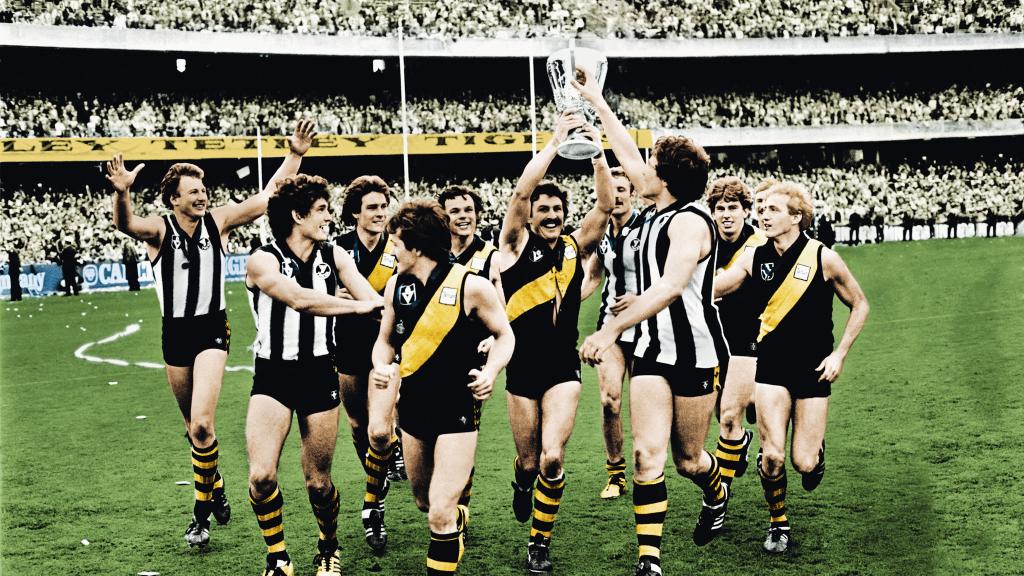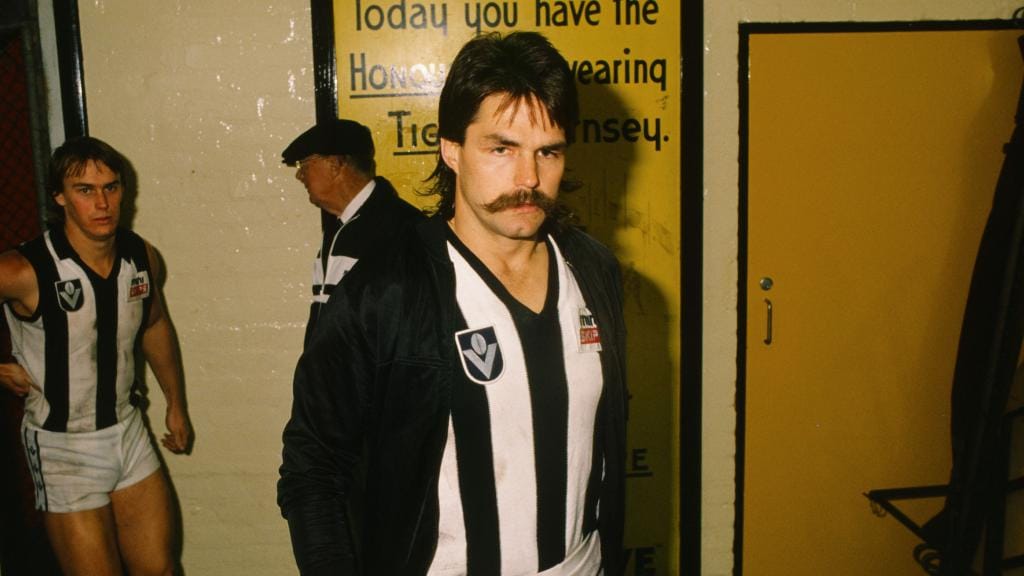FOR many, Saturday's MCG blockbuster between Richmond and Collingwood is a mouthwatering clash between the two most in-form teams in the AFL and whose style of footy mirrors each other.
But those with even the slightest appreciation for the history of the game are giddy with excitement for the biggest home and away game between the clubs since Anzac Day, 1977 when the Pies beat the Tigers by 26 points in front of 92,346 fans at the MCG.
JAM-PACKED Tigers v Pies officially a sell-out
Kevin Sheedy played for Richmond on that magical afternoon and stored the occasion away in his considerable memory bank. Eighteen years later, footy on that sacred day was revitalised when his Bombers took on the Magpies and there wasn't a spare seat at the MCG.
It is not always fashionable to celebrate the Victorian heritage of the game. Ours is now a national competition, where Perth and Brisbane matter just as much.
But Richmond versus Collingwood is an inner-Melbourne suburban blood feud, with only Victoria Street separating them. It is Struggletown versus the Carringbush, and its origins go back to 1919 when Collingwood star Dan Minogue returned from active service, snubbed a street parade planned in his honour by the club and informed the Magpies that he instead wanted to play for Richmond.
The Magpies were so incensed that they took a picture of Minogue off the wall and dumped it in a dusty cupboard facing a wall somewhere in their Victoria Park clubrooms. Tigers treasurer Jack Archer kept this piece of information to himself until the last few minutes before the two clubs faced off in the 1920 Grand Final, when he addressed the players and demanded payback for this outrageous snub.
"Go and win it boys. Set your minds on the goal in front, remember the injustices you have been burdened with; grind your teeth and stretch your nostrils wide," he said.
Archer's exhortation worked and two-and-a-bit hours later, the Tigers, with Minogue as captain-coach, won by 17 points to claim their first flag.
The Pies would avenge that result in the 1927-29 Grand Finals, the last of which came after Richmond had ended their quest for an unbeaten season in a semi-final played the week before.
The fortunes of both clubs ebbed and flowed for the next 40 years, and they were rarely good at the same time. For a time, the rivalry was primarily lived out on our TV screens by TV legends and former champions Jack Dyer and Lou Richards on World of Sport every Sunday afternoon. Dyer, arguably the greatest Tiger of all, would say he hated Collingwood so much that he wouldn't even watch black-and-white TV.
The Pies were just recovering from the scars of the 1970 capitulation against Carlton when they blew a six-goal lead at half-time of the preliminary final against the Tigers in 1973.
In 1980, Richmond's 81-point win over Collingwood in the Grand Final was, at the time, the greatest winning margin in a premiership decider. Tom Hafey had the misfortune of coaching the Pies that day, and his move to Collingwood after 11 years and four flags with Richmond at the end of 1976 was the biggest coaching switch for years.
Richmond dominated its local rivals in the 1980 VFL decider. Picture: AFL Photos
And it set the scene for the rivalry to take on a new, nastier and almost fatal turn.
Two of the stars of that 1980 Tigers premiership team were David Cloke and Geoff Raines. They were wooed to Collingwood on big bucks two years later, sparking a trading war between the two clubs that nearly sent them both to the wall.
Richmond, with pugnacious football manager Graeme Richmond leading the way, retaliated over the next couple of seasons, raiding Victoria Park to bring John Annear, Phillip Walsh, Wally Lovett, Neil Peart and Craig Stewart four kilometres down the road to Punt Road.
Walsh, who was tragically killed while coach of Adelaide in 2015, had just played a fantastic first season on the wing for the Magpies. Had there been a NAB AFL Rising Star in 1982, he would likely have won it. In an interview shortly before he died, he said leaving Collingwood when he did was one of his great regrets.
The huge salaries and transfer fees bankrupted the Tigers, and Richmond needed the 'Save Our Skins' campaign in 1990 to keep the club alive. Collingwood was also drowning in debt caused by massive transfer fees when Ranald McDonald, the president under whose watch Cloke and Raines joined the club, stepped down in favour of Allan McAlister after three games in 1985.
David Cloke was one of many big names to switch sides at the height of the Tigers-Pies rivalry. Picture: AFL Photos
The Pies would come good soon enough and would win that drought-breaking premiership in 1990. But a feature of the next quarter of a century was that Richmond was mainly terrible and the Magpies only good in fits and spurts. They were never premiership contenders at the same time and for much of that time were burdened with that most unwelcome football label, "sleeping giants".
At various stages, Essendon, Geelong and Hawthorn went past them. Adelaide and West Coast became bigger clubs and more powerful institutions, but there was always that wistful thinking along the lines of, "Imagine if Richmond and Collingwood came good at the same time. How good would that be?"
That time has come, and it explains the excitement ahead of Saturday's game. Richmond, the reigning premier with its unprecedented 100,000 members and Collingwood, which is coming fast. The Tigers, with their record-equalling 17-match winning streak at the MCG and the Pies, who act like they own the place.
From a footballing perspective, the flag won't be decided on Saturday afternoon. But viewed through another lens, this is one of the most significant home and away games for years.
If only Dan, Jack and Lou were still around to witness the next chapter of the great Victorian football story that they helped write.



